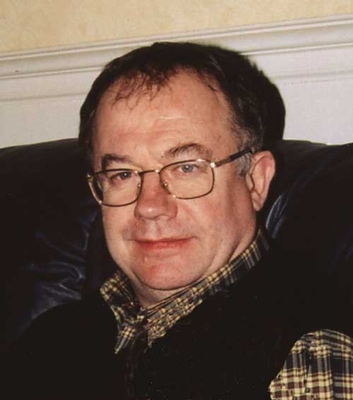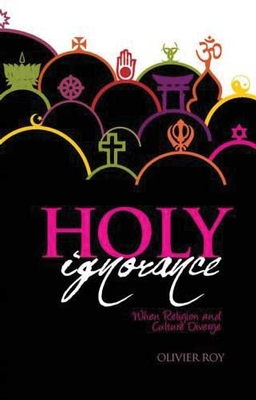 A recent survey of religious knowledge in the US, undertaken by the Pew Forum, found that atheists knew more about religion than believers did. Given 32 questions about “the core teachings, history and leading figures of major world religions”, non-believers scored consistently higher than the faithful on the details of religion and religion’s role in the world. To the Washington Post these results suggest that “the more you know, the less you believe”. But to social scientist and long-time observer of religion Olivier Roy, the results reinforce the conclusions of his new book. “They mean,” he told me over the phone from Florence, where he is Professor at the European University Institute, that “the more you believe the less you know – or the less you want to know” and that “is the exact definition of holy ignorance.”
A recent survey of religious knowledge in the US, undertaken by the Pew Forum, found that atheists knew more about religion than believers did. Given 32 questions about “the core teachings, history and leading figures of major world religions”, non-believers scored consistently higher than the faithful on the details of religion and religion’s role in the world. To the Washington Post these results suggest that “the more you know, the less you believe”. But to social scientist and long-time observer of religion Olivier Roy, the results reinforce the conclusions of his new book. “They mean,” he told me over the phone from Florence, where he is Professor at the European University Institute, that “the more you believe the less you know – or the less you want to know” and that “is the exact definition of holy ignorance.”
It is not surprising to find that Roy’s new book offers one of the very best analyses of the nature of “new religion” to have appeared in the last decade. Roy is already well known as a scholar of contemporary Islam. He speaks Persian and has written numerous books on Islam including the prescient The Failure of Political Islam (1994). He has also been the very model of the French-style intellectual engagé, serving as a consultant to the French Foreign Ministry, a UN relief coordinator in Afghanistan, and as the Organisation for Security and Co-operation in Europe’s representative in Tajikistan.
All the practical experience and academic knowledge he has accumulated over 30 years of investigating the nature of religion goes into this audacious and wholly plausible account of the relationship between an extraordinary range of contemporary religious phenomena: suicidal Jihadism, the rise of charismatic preachers, the endless disputes over headscarves, cartoons and religious symbols, and the rise of the New Atheism.
At the core of the book is the argument that the new forms of religious fundamentalism “discard theology, culture and knowledge. They are based on immediate contact with the truth, be it God, Jesus, Allah or the guru. It is religion reduced to faith. So once you are full of your faith then you don’t need to know anything else. The surrounding culture of knowledge is then either considered useless, because you have the truth directly, or threatening, because it might endanger your faith.”
This is not, Roy insists, a general indictment of religion as delusion. “I am referring to specific forms of religiosity. Many religions have been interested in knowledge. It would not be true to say, for example, that Orthodox Jews or Jesuits have been unconcerned with knowledge or science. ”
His conclusions about the willed ignorance of the new religionists are based on a careful study of the rhetoric of their preaching and proselytising. Unlike traditional religions where such rhetoric “is embedded in culture and specific in terms of ethnicity and language” and so could be said to have fused with the culture of the converted people in such places as Latin America, this new religion is not embedded. “It can cross borders, go anywhere, say the same thing to everyone. These preachers sell a product which is a universal product. It is the same everywhere, like Coca-Cola.”
Compare this with Catholicism. Catholicism, for Roy, is the prime example of how religion spreads through inculturation. It becomes entwined within local cultures, adjusts to them and changes them, becomes tied up with their local concerns and customs, language and regional inflections. Whereas the evangelical preachers look at cultures, all cultures, as if they are pagan. They are not interested in anything but immediate, unmediated and undiluted faith, and assert a religious purity in contrast to what they see as corrupted culture.
Roy looks at what preceded this split between religion and culture by examining the history of the “civilising” missions to the New World, the manner in which Christianity went about acquiring hegemony and new followers. It was an uneven process, but there are general and discernible trends. Catholicism’s initial determination to export a universalist version of Catholic culture to “savage lands” through its missions gradually gave way to a policy of “seeking a symbiotic relationship with culture”. He cites examples such as the “indigenisation of clerics” (training priests from the local population) and the development of Liberation Theology, a distinct fusion of Catholicism and indigenous political traditions. The Catholic Church may have tried to impose its own culture from without, dominate it, mould and dictate it, but it was always interested in local culture in a way that fundamentalism is not.
Unlike Catholicism, Protestant chose to maintain clear distinctions between culture and faith, to move in the direction of deculturation. This difference is what partly accounts for their differing contemporary fortunes. While the Pope scrabbles around trying to redefine Catholicism on the basis of its “deep links” with European culture, simultaneously failing to recruit any European priests or followers, Protestant sects – armed with their simple universal message, their direct relationship with Jesus and their rejection of contaminating knowledge – multiply from Caracas to Clapham Junction.
When religion was embedded within the local culture, as it was, say, 40 years ago in Catholic Spain or Ireland or indeed Britain, then “you did not have a cultural gap between believers and non-believers. It was a continuum. There was secular knowledge of religion, and profound knowledge amongst religious people. There was debate, of course, but there was no mutual ignorance.”
 What changed all this was globalisation. This subverted traditional local and national culture, it liberated labour from territory by offshoring and outsourcing, established new cultural flows and new social movements and signalled the end of the nation state and emergence of “a new world order”. But it is only now, according to Roy, that we can see the real impact globalisation has had on religion, and vice versa. “Fundamentalism,” he writes, “is ... both a contributory factor and a product of globalisation.” This comes about through what he calls “exculturation”, the process by which contemporary forms of belief have removed themselves from culture. Where once culture was perceived as a prize to be won by religion, or a shared space, or even something profane but unthreatening, culture comes to be seen by fundamentalism as neo-pagan, a threat to faith, something to be shunned or attacked.
What changed all this was globalisation. This subverted traditional local and national culture, it liberated labour from territory by offshoring and outsourcing, established new cultural flows and new social movements and signalled the end of the nation state and emergence of “a new world order”. But it is only now, according to Roy, that we can see the real impact globalisation has had on religion, and vice versa. “Fundamentalism,” he writes, “is ... both a contributory factor and a product of globalisation.” This comes about through what he calls “exculturation”, the process by which contemporary forms of belief have removed themselves from culture. Where once culture was perceived as a prize to be won by religion, or a shared space, or even something profane but unthreatening, culture comes to be seen by fundamentalism as neo-pagan, a threat to faith, something to be shunned or attacked.
Listen to the rhetoric, Roy urges. “Even in supposedly religious cultures the religious are in conflict with culture. In the US preachers refer to religion as being endangered, besieged, looked on as some kind of minority. The Tea Party claims to reconnect to a past where religion was evident. The religious say the same thing in Egypt. They say that their culture claims to be properly Muslim but it is not and now they have to exhibit the religious symbols, because what is seen in their society as religious isn’t really religious. The problem is precisely that the traditional values are no longer obvious. They have the nostalgia for a period when religion was obvious.”
Religion now becomes not a cohabitee of culture but its enemy. Consider the attitudes of the Taliban to pop music or of Christian Voice to Jerry Springer: The Opera or the Twilight vampire franchise. These new fundamentalist forms of religion retreat from the general culture. They set up faith schools and madrasas, religious retreats and Christian colleges. They develop Christian forms of popular music and Muslim stand-up. Boundaries between one’s faith and the general culture must now be policed assiduously, hence the rise of abstinence programmes and honour killings in the West. Internet sites and advice columns arise where anxious adherents can ask their clerics to adjudicate on whether oral sex or skinny jeans or holding hands in public or Harry Potter stories fall on the right side of the divide, or whether they are haram, tools of the devil.
Because faiths are now decoupled from their local cultures they can circulate more freely globally and intersect with other “floating cultural markers”, giving rise to new hybrids like Halal fast food, eco-kosher and cyber-fatwa.
All this, in Roy’s view, is a consequence of secularism’s demand that religious people keep their faith to themselves and out of the pubic sphere: “The ‘religious revival’,” writes Roy, “is primarily about the believer’s refusal to see his world reduced to the private sphere.” The new fundamentalisms look with shock at a culture where there is no longer any evidence of their faith. They become isolated and begin to brandish the religious markers of their faith – crucifix, headscarf, Bible, faith accessories – as a demand for public recognition. In this context religion, for so long part of everyday culture, becomes strange. For the secular, people with faith are looked on as weird. Roy points to the case of the Pope – he has been wearing the same sort of garb for centuries, but is suddenly publically lampooned as a man in a dress with funny shoes.
In the face of modern secularism, these new fundamentalisms, such as Wahabism, charismatic evangelical Christianity or Mormonism, are faced with a challenge. Either they withdraw, become a sect, like the Amish, or at some level they have to reconnect with “normal” culture. To do this they have to look for a compromise, to negotiate. But this negotiation, Roy says, “is not being done round a table, through discussion. It is a process full of tensions, and what I call formatting – trying to redefine what religion means in the public sphere.” This is debate through confrontation, over headscarves and crucifixes in schools, prayer in the classroom and prayer rooms at airports, the limits of satire and cartoons and plays, bans on minarets, and the challenge of New Atheism. Though Roy sees that much of this can go too far – he denounces Geert Wilders’ attempt to ban the Qur’an in Holland as inconsistent and self-defeating – still they are all part of this debate, a reorientation between religion and culture that has to happen. Roy is struck by how many of these disputes are now ending up in court, as if the courtroom were a surrogate for culture, the only place where the rules can be agreed upon and decisions adhered to.
At the end of our conversation, I ask Roy if he regards religion as inevitable, an essential human trait, or a time-bound delusion? He laughs and then says: “I think that religion as reduced to faith escapes the social scientist, we cannot understand it, that is a fact. For me it is a mystery. All we can say is that some people do have a faith and others don’t. It is almost as if there are two kinds of humans. But the point is these people are human beings, and we live in the same society. When you share the same culture, faith is not so much of an issue, but common culture is disappearing or recasting itself into something different. The confrontation now is between faith and the absence of faith. We have to endeavour, as non-believers, precisely to try and understand faith.”
Holy Ignorance: When Religion and Culture Diverge is published by C Hurst and Co

